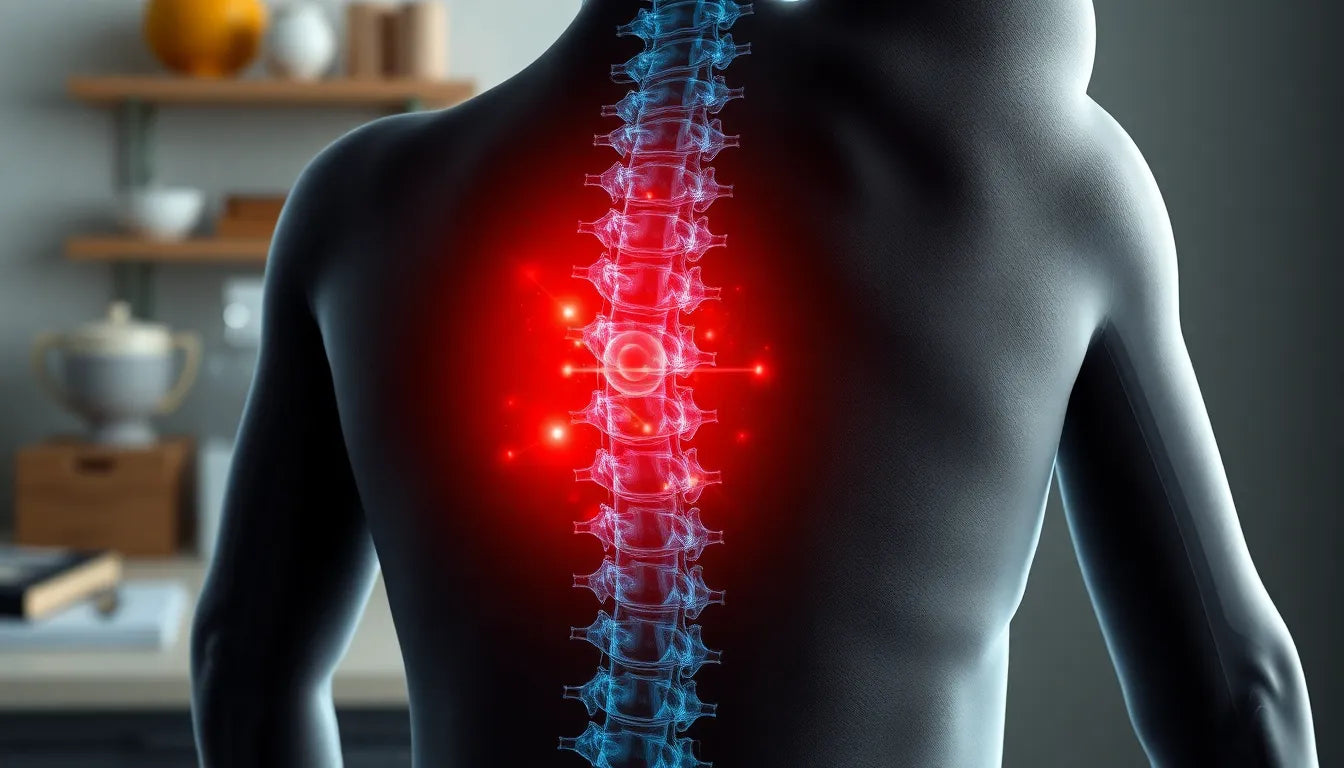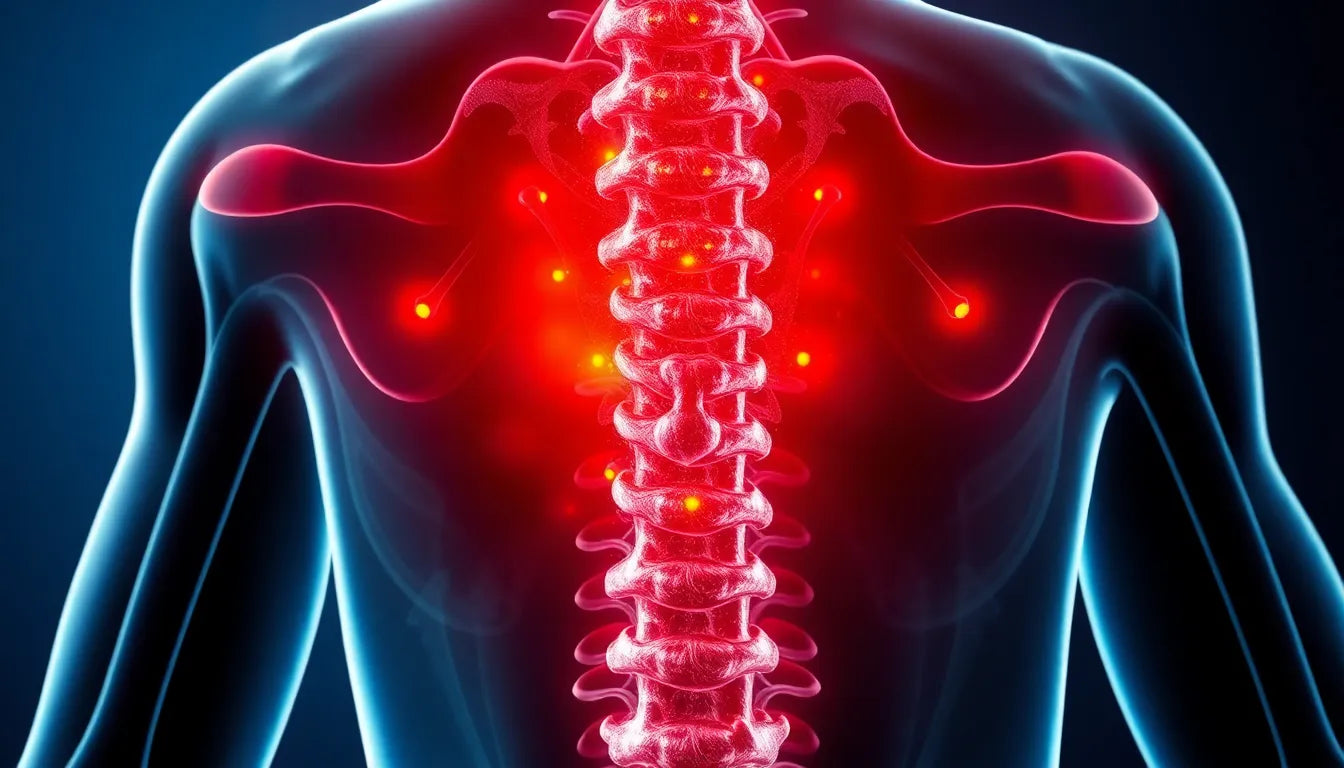The human spine is an intricate structure, serving as the backbone of our skeletal system, literally and figuratively. Comprised of vertebrae stacked one atop the other, it provides both support and flexibility to our bodies. Nestled between these vertebrae are the intervertebral discs, which play a crucial role in maintaining spinal integrity. These discs act as shock absorbers, cushioning the vertebrae during movement and providing the spine with the ability to bend and twist.
understanding herniated discs
A herniated disc, often referred to as a "slipped" or "bulging" disc, occurs when the soft, gel-like center of an intervertebral disc pushes through a tear in its tougher outer layer. This condition is most common in the lower back, known as the lumbar spine, but can also occur in the cervical (neck) and thoracic (mid-back) regions of the spine. Herniated discs are a prevalent issue, affecting people of various ages, although they are more common in adults aged 30 to 50.
The prevalence of herniated discs in the lumbar region is significant due to the immense pressure this area endures, as it supports much of the body's weight and is involved in a wide range of movements. When a disc herniates, it can compress nearby nerves, leading to a variety of symptoms that can significantly impact daily life.
impact of a herniated disc
The most immediate concern with a herniated disc is the potential for nerve compression. When the disc material presses on spinal nerves, it can cause symptoms such as pain, numbness, and weakness in the affected area. In the lumbar spine, this often manifests as sciatica, a condition characterized by sharp, radiating pain that travels from the lower back down through the buttocks and into one leg. This pain can be debilitating, making it difficult to perform everyday tasks.
Aside from pain, individuals with a herniated disc may experience tingling sensations, muscle weakness, or even a reduction in reflexes. These symptoms occur because the herniated material disrupts the normal function of the nerves it compresses. It's important to note that while herniated discs can cause significant discomfort, not all cases require surgical intervention. Many individuals find relief through conservative treatments, which can include physical therapy, medication, and lifestyle modifications.
Understanding the complexities of a herniated disc is crucial for managing its symptoms and improving quality of life. By recognizing the role of intervertebral discs and the impact of their herniation, individuals can take proactive steps to address their condition and seek appropriate care.
stages of disc herniation
Understanding the stages of disc herniation is crucial for recognizing how this condition develops and progresses. There are four primary stages: degeneration, prolapse, extrusion, and sequestration. Each stage reflects a different level of severity and structural change in the disc.
In the degeneration stage, the disc begins to show signs of wear and tear, often due to age-related changes. The outer layer of the disc may weaken, but the inner gel remains contained. This stage might not cause immediate symptoms, but it sets the groundwork for potential issues.
During the prolapse stage, also known as a bulging disc, the inner gel starts to push against the weakened outer layer, causing the disc to bulge. This can begin to irritate surrounding nerves, leading to discomfort and mild symptoms.
The extrusion stage occurs when the inner gel breaks through the outer layer, but remains connected to the disc. This can result in significant nerve compression and more pronounced symptoms, such as pain and numbness.
Finally, the sequestration stage involves the inner gel breaking away from the disc entirely. This free fragment can move and press against nerves, often causing severe symptoms that may require more intensive treatment.
symptoms based on disc location
The symptoms of a herniated disc can vary significantly depending on its location within the spine. Each region—lumbar, cervical, and thoracic—presents distinct challenges and symptoms.
lumbar spine (lower back)
Herniated discs in the lumbar region are the most common and often result in sciatica. This condition is characterized by sharp pain radiating from the lower back down the leg, often accompanied by numbness and muscle weakness. The pain is typically felt on one side of the body and can severely impact mobility.
cervical spine (neck)
When a disc herniates in the cervical spine, symptoms may include pain that radiates to the shoulders, arms, and hands. Numbness, tingling, and muscle weakness in these areas are common, and movements of the neck can exacerbate the pain.
thoracic spine (mid-back)
Herniated discs in the thoracic region are less common but can cause pain around the ribcage. This pain can sometimes mimic cardiac or abdominal issues, making it crucial to seek proper medical evaluation for accurate diagnosis.
causes and risk factors
The primary cause of herniated discs is age-related degeneration. As we age, discs lose water content, making them less flexible and more prone to tearing or rupturing. However, several other factors can increase the risk of herniation.
Injury from heavy lifting, especially when done improperly, can place excessive strain on the spine, leading to herniation. Obesity is another risk factor, as excess body weight increases the load on the spine. Genetics also play a role; some individuals may inherit a predisposition to developing herniated discs.
diagnosis and imaging
Diagnosing a herniated disc typically begins with a physical examination, where a healthcare provider assesses symptoms and conducts tests to evaluate nerve function. Imaging techniques like MRI and CT scans are often used to confirm the diagnosis and pinpoint the exact location and severity of the herniation.
These imaging tools are crucial for identifying which nerve roots are affected, helping to guide treatment decisions. Accurate diagnosis ensures that the chosen treatment plan addresses the specific needs of the patient, optimizing their chances for recovery.
treatment options for herniated discs
When managing a herniated disc, the choice of treatment depends on the severity of symptoms and the specific needs of the patient. Many individuals find relief through non-surgical methods, while surgery is reserved for more severe cases.
non-surgical treatments
Non-surgical treatments are often the first line of defense against herniated disc symptoms. Physical therapy plays a crucial role, focusing on exercises that strengthen the muscles supporting the spine, improve flexibility, and reduce pain. Pain medications, including nonsteroidal anti-inflammatory drugs (NSAIDs), can help manage discomfort and inflammation.
Epidural steroid injections are another option, providing targeted relief by reducing inflammation around the affected nerves. Lifestyle modifications, such as weight management and ergonomic adjustments at work and home, can also significantly impact symptom management and overall spinal health.
surgical interventions
Surgery is typically considered when non-surgical treatments fail to provide relief, or when there are signs of significant neurological deficits, such as severe muscle weakness or loss of bowel or bladder control. The most common surgical procedures for herniated discs include discectomy and laminectomy.
A discectomy involves removing the portion of the disc that is pressing on the nerve, while a laminectomy involves removing part of the vertebra to relieve pressure on the spinal cord or nerves. These procedures can be highly effective in alleviating symptoms and improving quality of life.
prognosis and recovery
The prognosis for individuals with herniated discs is generally positive, especially with appropriate treatment. Many cases improve over time with conservative management, and some may even resolve on their own. Recovery times vary depending on the severity of the herniation and the treatment approach, but most individuals can return to normal activities within a few weeks to months.
It's important for patients to follow their healthcare provider's recommendations and engage in regular follow-up care to monitor progress and adjust treatment plans as needed. With the right approach, many people can manage their symptoms effectively and maintain a high quality of life.
frequently asked questions
What are the first signs of a herniated disc?
The initial symptoms of a herniated disc often include localized back pain and discomfort. As the condition progresses, individuals may experience radiating pain, numbness, or tingling in the limbs, depending on the location of the herniation.
Can a herniated disc heal on its own?
Yes, many cases of herniated discs can resolve on their own over time. Conservative management, including physical therapy and lifestyle modifications, often helps facilitate this process.
When should I see a doctor for back pain?
It is advisable to seek medical evaluation for back pain that is persistent, severe, or accompanied by symptoms such as numbness, muscle weakness, or loss of bowel or bladder control.
Is surgery always required for a herniated disc?
No, surgery is not always necessary for a herniated disc. It is typically considered a last resort after other treatments have failed to provide adequate relief or if there are significant neurological deficits.
How can I prevent a herniated disc?
Preventing a herniated disc involves maintaining a healthy weight, practicing good posture, and using proper lifting techniques. Regular exercise and strengthening the core muscles can also support spinal health and reduce the risk of herniation.
Sources
- Cleveland Clinic. "Herniated Disk: Causes, Symptoms, and Treatment."
- NewYork-Presbyterian (Och Spine). "Understanding Herniated Discs."
- Penn Medicine. "Herniated Disc: Symptoms and Treatment."
- Johns Hopkins Medicine. "Lumbar Disc Disease (Herniated Disc)."
- MedPark Hospital. "Herniated Disc: Causes and Prognosis."
- American Association of Neurological Surgeons (AANS). "Herniated Disc Information."


















